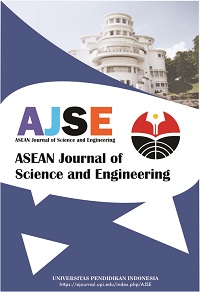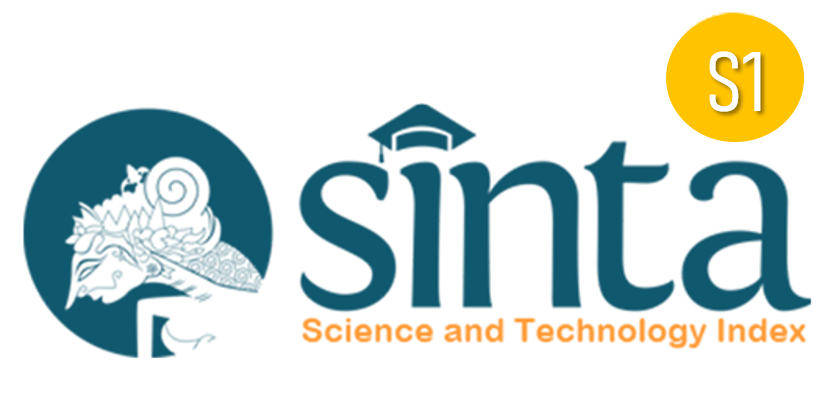Real Time Water Quality Monitoring System for Smart City in Malaysia
Abstract
Water is essential for life. Frequent water disruption in Malaysia caused turbulence in daily lives and livelihood of thousands Malaysian. The water operators in Malaysia are facing serious challenges to ensure consumers have continuous access to clean water and to ensure a sustainable water future. River pollution in Malaysia had been identified to be one of the causes of water crisis in Malaysia. Hence, a continuous monitoring system utilizing the concept of Internet of Things had been proposed in this paper. Agile model is used due to its simplicity. The water’s pH measurement, turbidity, temperature and flow can be measured and the reading will be sent to end-user. The sensors that detects the pH value, turbidity, temperature and flow measurement of a water sample will pass through the information to the Arduino, and the result will be shown on the mobile devices via an app called Blynk. This portable and comprehensive prototype is suitable to be used in Smart Cities where WiFi signals is available as the transmission medium.
Keywords
Full Text:
PDFReferences
Ahmad, R. (2019, July 2). Mitigating environmental threats. New Straits Times. Retrieved from https://www.nst.com.my/opinion/columnists/2019/07/500725/mitigating-environmental-threats
Alkandari, A., Alabduljader, Y., and Moein, S. M. (2012, July). Water monitoring system using Wireless Sensor Network (WSN): Case study of Kuwait beaches. In 2012 Second International Conference on Digital Information Processing and Communications (ICDIPC) (pp. 10-15). IEEE.
Babulal, V., Solhi, F., and Bala Krishnan, D. (2020, September 3). Effluents believed to cause Sungai Selangor pollution. New Straits Times. Retrieved from https://www.nst.com.my/news/nation/2020/09/621729/effluents-believed-cause-sungai-selangor-pollution
Bao, J. L. K. (2010). Water quality study and its relationship with high tide and low tide at Kuantan River. Universiti Malaysia Pahang, Pekan.
Borhan, H., and Ahmed, E. M. (2012). Green environment: Assessment of income and water pollution in Malaysia. Procedia-Social and Behavioral Sciences, 42(2012), 166-174.
Geetha, S., and Gouthami, S. J. S. W. (2016). Internet of things enabled real time water quality monitoring system. Smart Water, 2(1), 1-19.
Huang, Y. F., Ang, S. Y., Lee, K. M., and Lee, T. S. (2015). Quality of water resources in Malaysia. Research and Practices in Water Quality, 3(2015), 65-94.
Mohd Kassim, M. S., Rozman, M. R., Zulhairi, M. F. A., and Abu Bakar Sajak, A. (2020). IoT water quality monitoring for smart city. International Journal of Advanced Trends in Computer Science and Engineering, 9(1), 240-246.
Muyibi, S. A., Ambali, A. R., and Eissa, G. S. (2008). The impact of economic development on water pollution: Trends and policy actions in Malaysia. Water Resources Management, 22(4), 485-508.
Ram, S. (2020). Over 300,000 residents in the klang valley affected by water cut due to river pollution. Retrieved October 18, 2020, from https://says.com/my/news/4-districts-in-the-klang-valley-face-sudden-water-disruption-due-to-pollution-in-raw-water
Rasin, Z., and Abdullah, M. R. (2009). Water quality monitoring system using zigbee based wireless sensor network. International Journal of Engineering and Technology, 9(10), 24-28.
Sahid, I., Gasim, M. B., Toriman, E., Pereira, J. J., Mokhtar, M., and Abdullah, M. P. (2009). Integrated Water Resource Management and Pollution Sources in Cameron Highlands, Pahang, Malaysia. American-Euresian Journal of Agricultural and Environmental Sciences, 5(6), 725–732.
Sukaimi, S. A. (2020, June 24). Authorities confirm: Latest Pasir Gudang pollution caused by Sg Kim Kim toxic waste. New Straits Times. Retrieved from https://www.nst.com.my/news/nation/2019/06/498799/authorities-confirm-latest-pasir-gudang-pollution-caused-sg-kim-kim-toxic
DOI: https://doi.org/10.17509/ajse.v2i1.37515
Refbacks
- There are currently no refbacks.
Copyright (c) 1970 Universitas Pendidikan Indonesia

This work is licensed under a Creative Commons Attribution-ShareAlike 4.0 International License.












